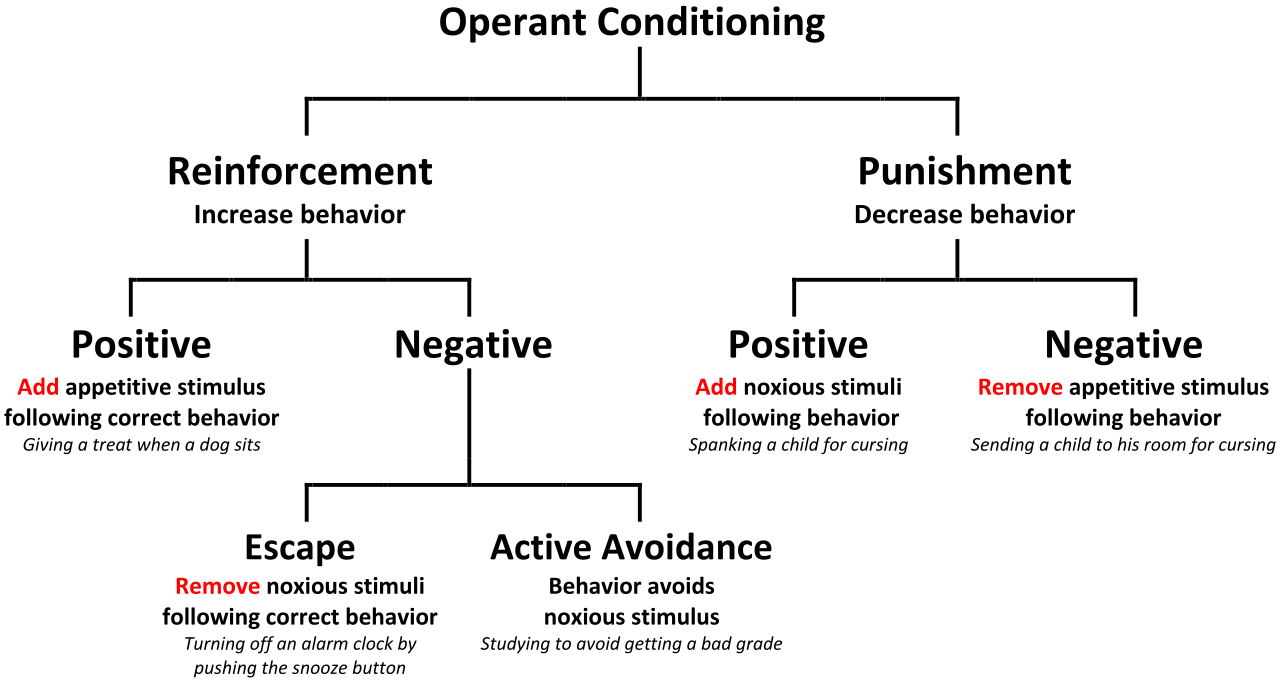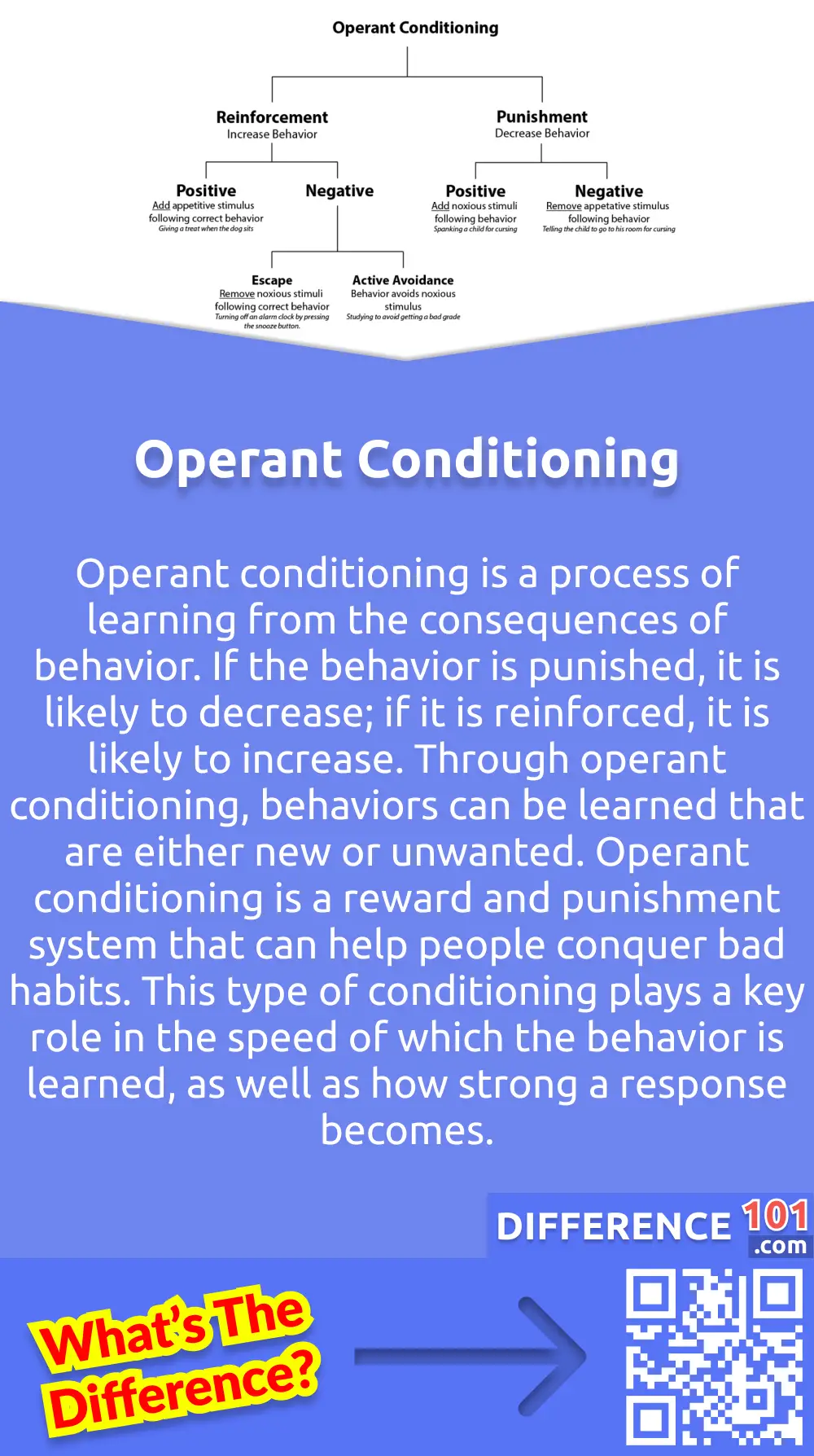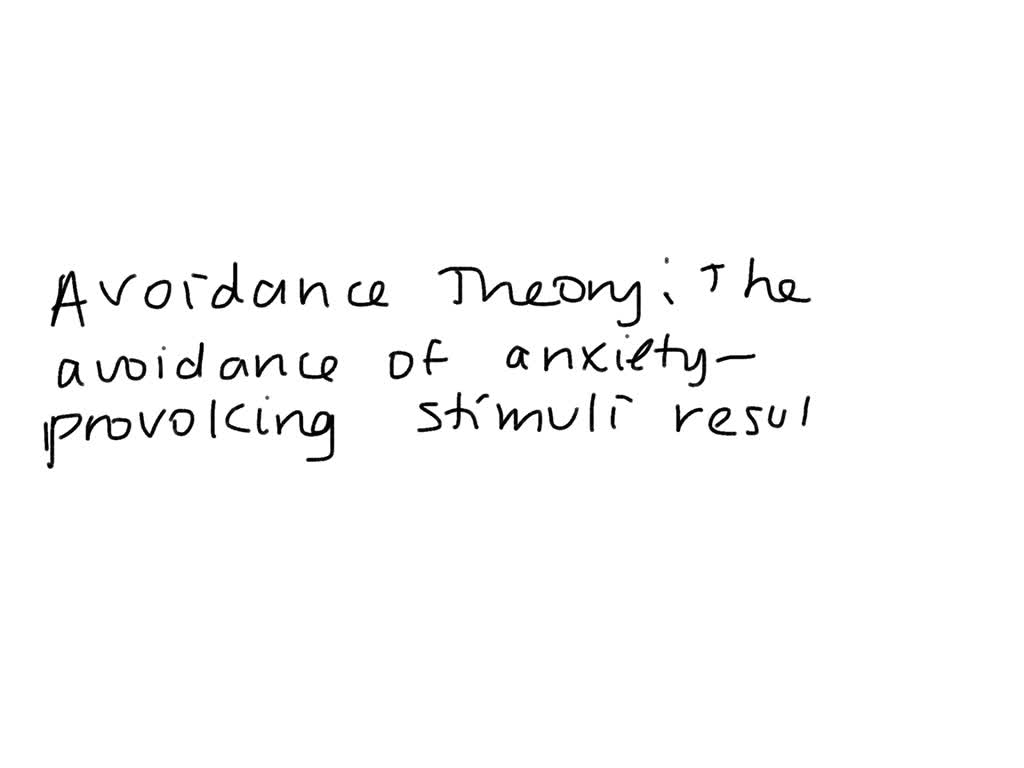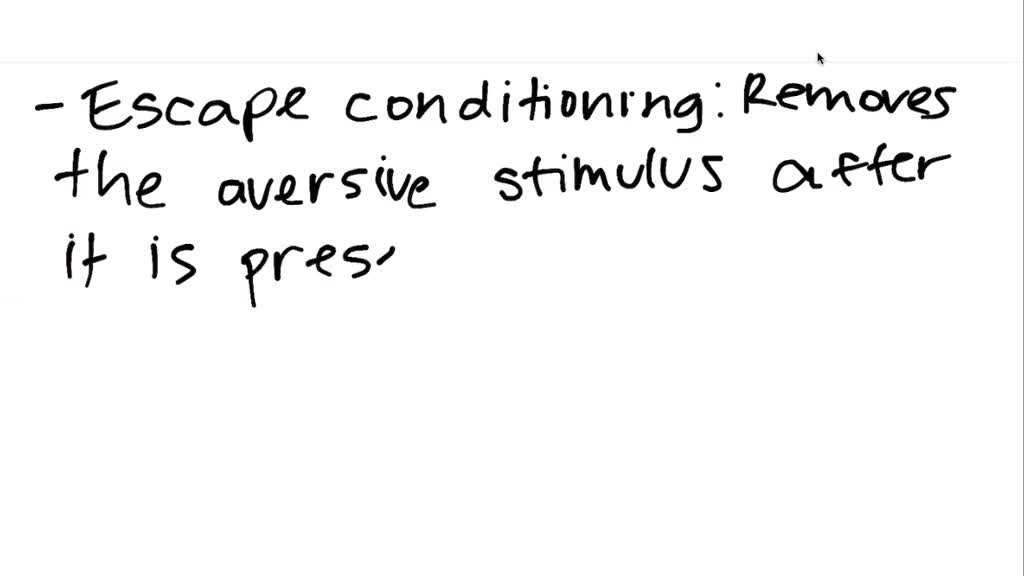What Is The Difference Between Escape Conditioning And Avoidance Conditioning
What Is The Difference Between Escape Conditioning And Avoidance Conditioning - A difference between escape and avoidance conditioning is that the latter often involves a warning stimulus, also called conditioned. Escape conditioning is a learning process where a behavior is reinforced by leading to the removal of an unpleasant stimulus. For escape conditioning to occur, an aversive stimulus must be there to begin with, unlike with avoidance conditioning. You could show a child a. While escape and avoidance conditioning have similar mechanisms, there are some key differences between the two.
For escape conditioning to occur, an aversive stimulus must be there to begin with, unlike with avoidance conditioning. You could show a child a. Escape conditioning is a learning process where a behavior is reinforced by leading to the removal of an unpleasant stimulus. A difference between escape and avoidance conditioning is that the latter often involves a warning stimulus, also called conditioned. While escape and avoidance conditioning have similar mechanisms, there are some key differences between the two.
You could show a child a. Escape conditioning is a learning process where a behavior is reinforced by leading to the removal of an unpleasant stimulus. For escape conditioning to occur, an aversive stimulus must be there to begin with, unlike with avoidance conditioning. A difference between escape and avoidance conditioning is that the latter often involves a warning stimulus, also called conditioned. While escape and avoidance conditioning have similar mechanisms, there are some key differences between the two.
What is the Difference Between Escape Conditioning and Avoidance
Escape conditioning is a learning process where a behavior is reinforced by leading to the removal of an unpleasant stimulus. You could show a child a. While escape and avoidance conditioning have similar mechanisms, there are some key differences between the two. For escape conditioning to occur, an aversive stimulus must be there to begin with, unlike with avoidance conditioning..
Operant Conditioning vs. Classical Conditioning 8 Main Distinctions To
You could show a child a. Escape conditioning is a learning process where a behavior is reinforced by leading to the removal of an unpleasant stimulus. A difference between escape and avoidance conditioning is that the latter often involves a warning stimulus, also called conditioned. While escape and avoidance conditioning have similar mechanisms, there are some key differences between the.
What Is the Difference Between Classical Vs. Operant Conditioning
A difference between escape and avoidance conditioning is that the latter often involves a warning stimulus, also called conditioned. While escape and avoidance conditioning have similar mechanisms, there are some key differences between the two. You could show a child a. Escape conditioning is a learning process where a behavior is reinforced by leading to the removal of an unpleasant.
What is the Difference Between Escape Conditioning and Avoidance
While escape and avoidance conditioning have similar mechanisms, there are some key differences between the two. You could show a child a. Escape conditioning is a learning process where a behavior is reinforced by leading to the removal of an unpleasant stimulus. For escape conditioning to occur, an aversive stimulus must be there to begin with, unlike with avoidance conditioning..
Operant Conditioning vs. Classical Conditioning What’s The Difference
Escape conditioning is a learning process where a behavior is reinforced by leading to the removal of an unpleasant stimulus. While escape and avoidance conditioning have similar mechanisms, there are some key differences between the two. For escape conditioning to occur, an aversive stimulus must be there to begin with, unlike with avoidance conditioning. A difference between escape and avoidance.
Escape Learning Examples and Definition (2024)
For escape conditioning to occur, an aversive stimulus must be there to begin with, unlike with avoidance conditioning. Escape conditioning is a learning process where a behavior is reinforced by leading to the removal of an unpleasant stimulus. You could show a child a. A difference between escape and avoidance conditioning is that the latter often involves a warning stimulus,.
escape conditioning occurs when a neg experience ends (or is escaped
A difference between escape and avoidance conditioning is that the latter often involves a warning stimulus, also called conditioned. You could show a child a. Escape conditioning is a learning process where a behavior is reinforced by leading to the removal of an unpleasant stimulus. For escape conditioning to occur, an aversive stimulus must be there to begin with, unlike.
Avoidance Learning Definition and 10 Examples (2024)
You could show a child a. While escape and avoidance conditioning have similar mechanisms, there are some key differences between the two. For escape conditioning to occur, an aversive stimulus must be there to begin with, unlike with avoidance conditioning. Escape conditioning is a learning process where a behavior is reinforced by leading to the removal of an unpleasant stimulus..
SOLVED What is the difference between Prevention and Avoidance? Explain.
A difference between escape and avoidance conditioning is that the latter often involves a warning stimulus, also called conditioned. While escape and avoidance conditioning have similar mechanisms, there are some key differences between the two. You could show a child a. Escape conditioning is a learning process where a behavior is reinforced by leading to the removal of an unpleasant.
SOLVEDWhat is the difference between escape conditioning and avoidance
You could show a child a. For escape conditioning to occur, an aversive stimulus must be there to begin with, unlike with avoidance conditioning. A difference between escape and avoidance conditioning is that the latter often involves a warning stimulus, also called conditioned. Escape conditioning is a learning process where a behavior is reinforced by leading to the removal of.
You Could Show A Child A.
Escape conditioning is a learning process where a behavior is reinforced by leading to the removal of an unpleasant stimulus. For escape conditioning to occur, an aversive stimulus must be there to begin with, unlike with avoidance conditioning. A difference between escape and avoidance conditioning is that the latter often involves a warning stimulus, also called conditioned. While escape and avoidance conditioning have similar mechanisms, there are some key differences between the two.









